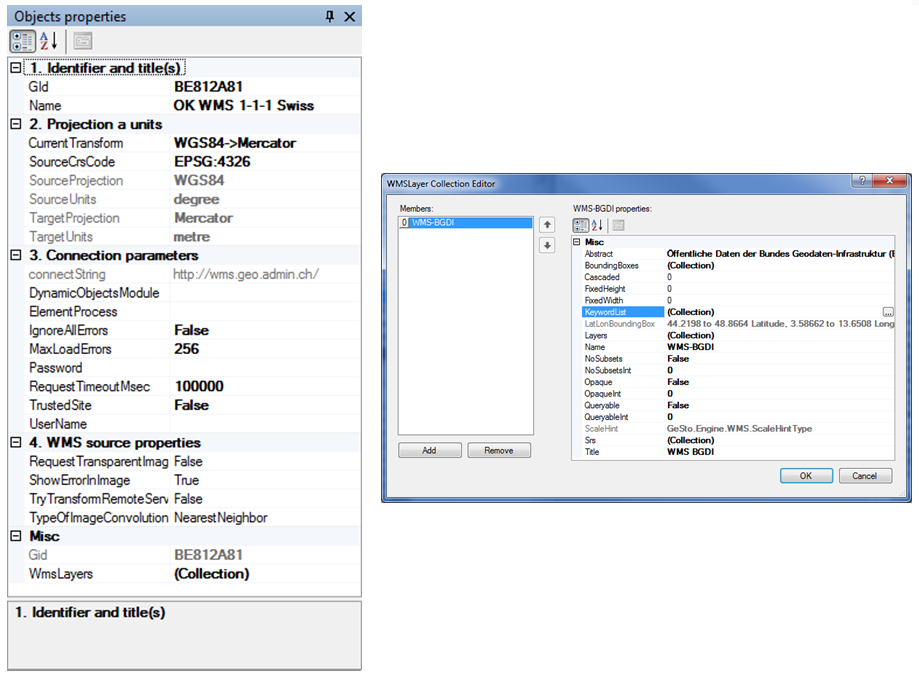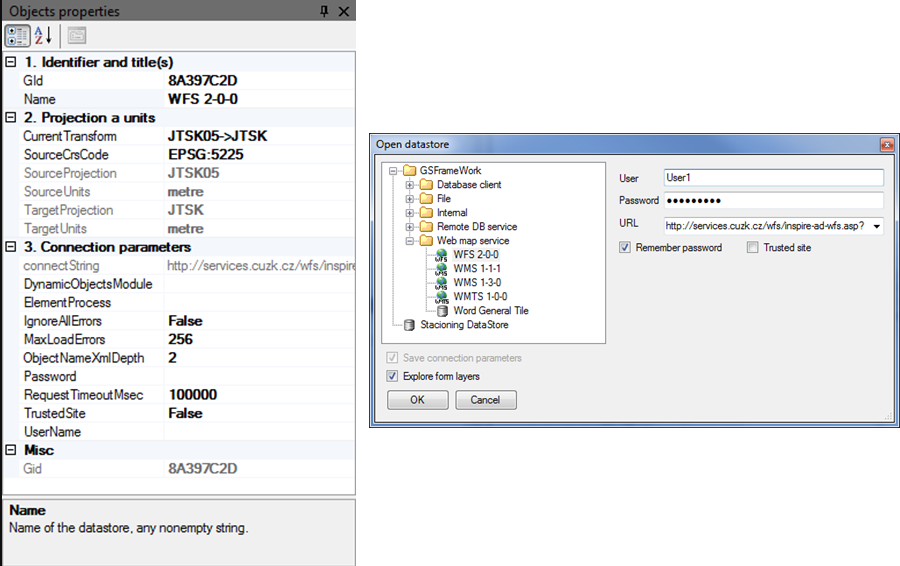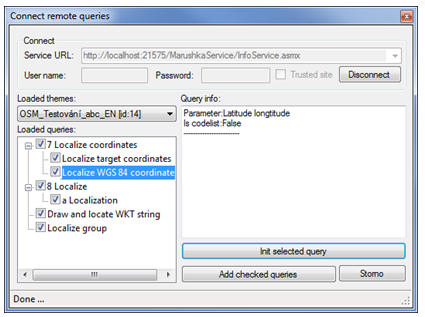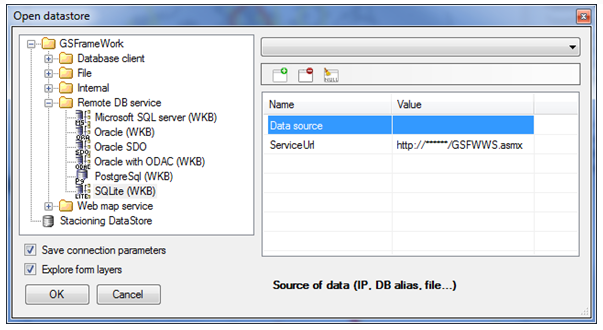Web Services
WMS
- short for Web Map Service
- It is a standard service created by OGC specifications, designed to provide georeferenced raster images on the internet. Raster images are generated by the map server through data from the GIS database.
- Currently supported WMS versions in Marushka Design are 1.0.0, 1.1.0, 1.1.1 and 1.3.0.
- MarushkaDesign supports three basic request types, specifically a) GetMap, b) GatCapabilities, c) GetFeatureInfo.
- It is possible for individual layers to define which layers and how will these be published, in what format and which EPSG.

WFS
- short for Web Feature Service
- It is standard service created by OGC specificatons is used for creating, modifying and exchanging of geographic informaction in vector format over the internet using HTTP. WFS encodes and transfers information in GML format, a subset of XML.
- Currently Marushka Design supports WFS version 1.0.0, 1.1.0 and 2.0.0.

WMTS
- short for Web Map Tile Service
- It is a standard protocol for serving georeferenced map tiles with pre-defined content, extent and resolution. WMTS is similar to WMS service, but it is designed to achieve better server performance in applications which are dealing with many requests simultaneously. Instead of creating a signle image for each query, WMTS returns small pre-generated images or reuses identical previuos request that follow a discrete set of tile matrices.
- Marushka Design currently supports WMTS version 1.0.0.

Remote Localization
- Using this service it is possible to load from any Marushka server localization queries into project in Marushka Design. Server identification is performed based on the URL, username and password.
- The user is then offered from which theme of the given server he wants to load and also which queries he wants to select.
- Using this service thus eliminates the need to import queries from a remote data source or create a completely new localization queries.

Remote Databases
- The data source is in this case the location of the source data that will be extracted, transformed and loaded into target database. Data from the remote database resource are extracted and migrated into the local database. To access a remote database, the user must enter compared to the standard extra parameter ServiceUrl. The advantage is that this way of work with databases does not require database client.
- Currently supported data stores are: Microsoft SQL server (WKB), Oracle (WKB), Oracle (SDO), Oracle with ODAC (WKB), PostgreSql (WKB), SQLite (WKB).

